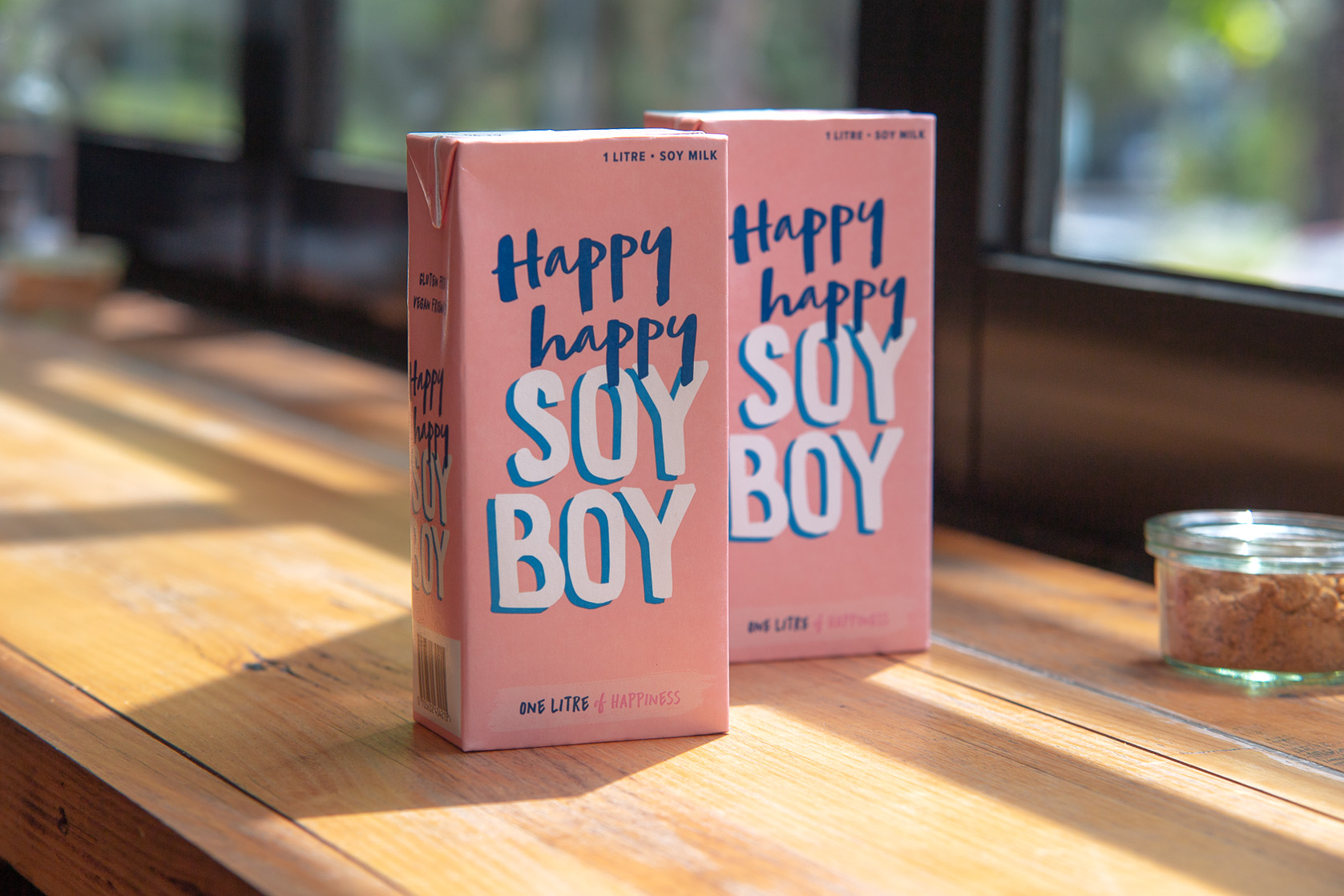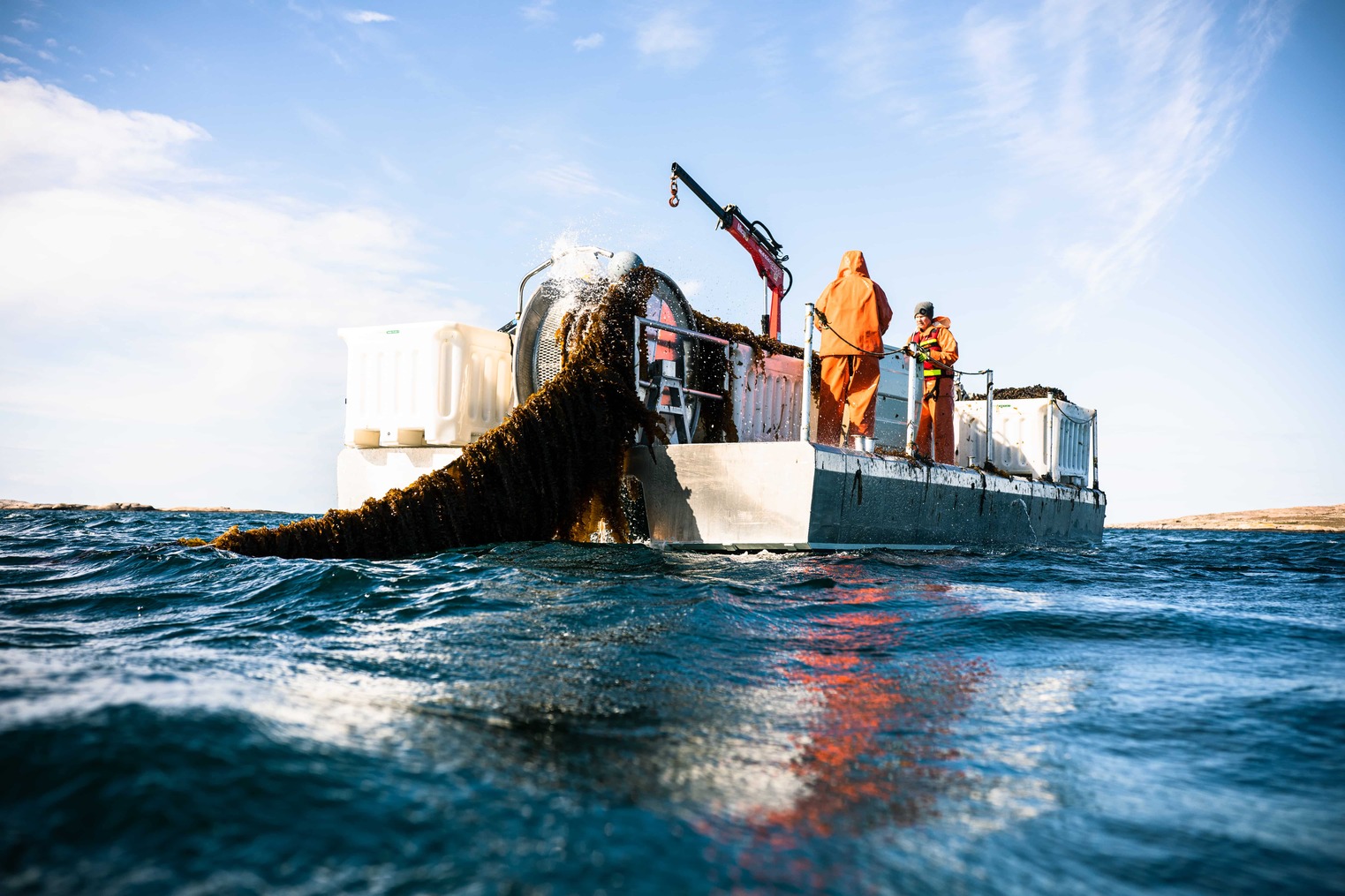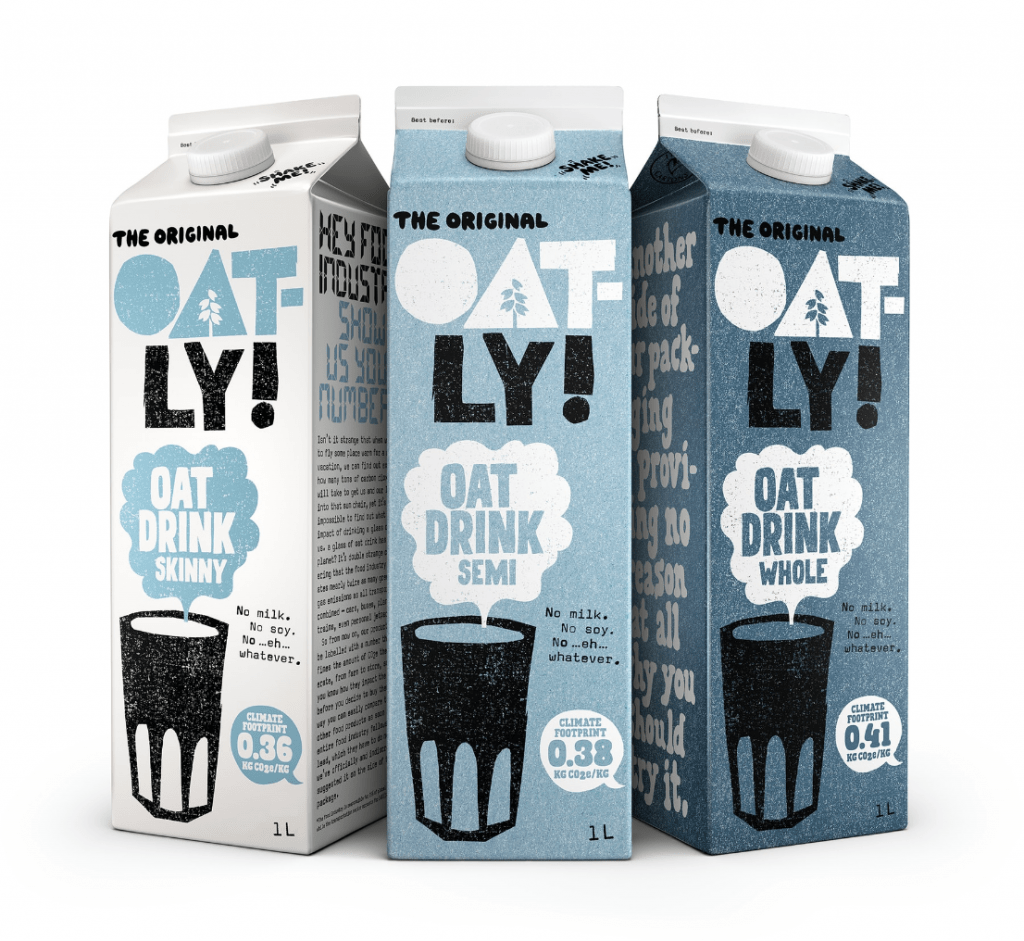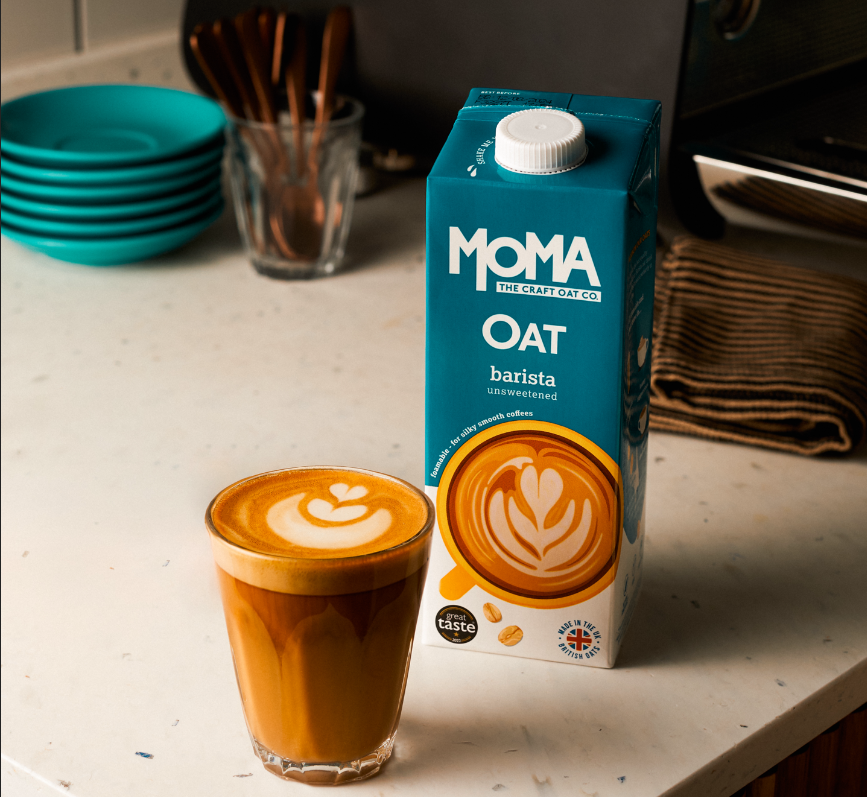Happy Happy Foods: What’s a latte with a lower climate footprint? A Happy Happy Latte
If we say “purpose-driven company”, what are you thinking of? If Happy Happy Foods is not the first to pop in mind, then we can assure you it is the most authentic. Happy Happy Foods set out to create plant-based dairy barista standard m*lks that complement espresso without compromising on taste, nutrition, or climate accountability. When it comes to dedication to climate impact, it is so inscribed in the company’s mission that it became their tagline: A climate responsible company. With a climate footprint for every Happy happy product, CarbonCloud concurs.
Apart from their remarkable success among coffee lovers in Singapore, Australia, and New Zealand, Happy Happy Foods stand out due to their commitment to authenticity: Whatever the team creates and communicates stems from actions and facts. Their first product, Happy Happy Soy Boy is nutritionally similar to dairy milk – but environmentally, it’s much more beneficial.
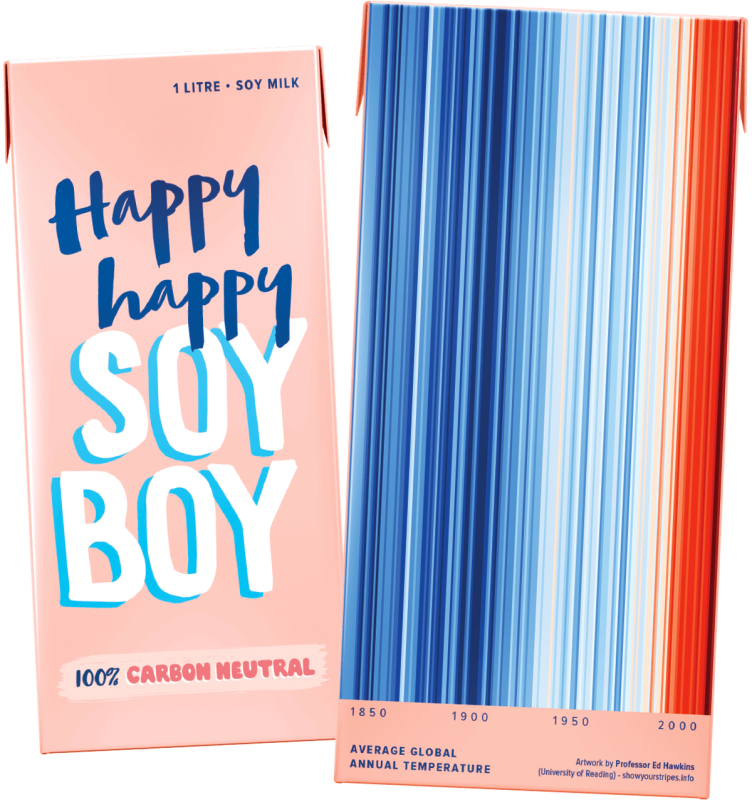
Committed to action, facts, choice
Happy Happy Foods knew that plant-based products are generally more climate-friendly, but they did not rest on this narrative. They set out to communicate their climate mission with credibility, grounded in data. We spoke with Lloyd Andre Smith, the founder of Happy Happy, to talk about the company’s products and their climate goals.

We created the company to embrace the change the food sector needs: To make it as easy as possible for consumers to choose plant-based, climate-friendly options that deliver on taste, texture, or nutrition. “Climate responsible” is not just a marketing slogan to us. Climate change is the greatest challenge of our generation and everyone can make a difference. Every choice has a climate footprint and you can make the right choice if you are empowered with the tools to calculate your individual impact.”
Lloyd Andre Smith
founder of Happy HappyLloyd mentions that consumers have the power to make informed, environmentally conscious food choices. But, as he points out, the relevant climate impact information is often not clearly presented.
Different kinds of food can fulfil the same nutritional needs and consumers can look to a product’s nutrition panel in order to make the right choice for their body. Consumers require a reference point to create awareness about their climate impact, which is why full transparency from food and beverage brands about the footprints of their products is so important.
Climate data turned knowledge
But climate information in absolute terms is simply that: Information. The market needs climate knowledge in relative terms to act with an impact. The number in climate footprints gains meaning when it’s related to something else. So, let’s look at the numbers for Happy Happy Soy Boy and just how climate-friendly a choice it is.

These two numbers side to side highlight the consumer choice Lloyd is talking about. It answers how much they save, affirms their power of choice and confirms that they made the right one.
People can’t believe the difference. I think the shock comes from being confronted with just how big your carbon emissions savings can be with one choice, one simple switch.
Walking the talk of climate action
Happy Happy Foods happily share the weight of climate responsibility with their consumers. True to purpose, their climate work is not just a marketing tagline; it comes from profound work. They measure the climate footprint of their products to create credibility in the climate domain and products that have depth, data, and science behind them.
Transparency’, ‘sustainability’, ‘the global climate crisis’ - these are more than buzzwords. They are practices and issues that demand real consideration, from both producers and the consumer. In the climate footprint domain, we need a third party that has credibility so that we can make meaningful comparisons and back up our messaging and ambition with facts. That’s where CarbonCloud comes in.
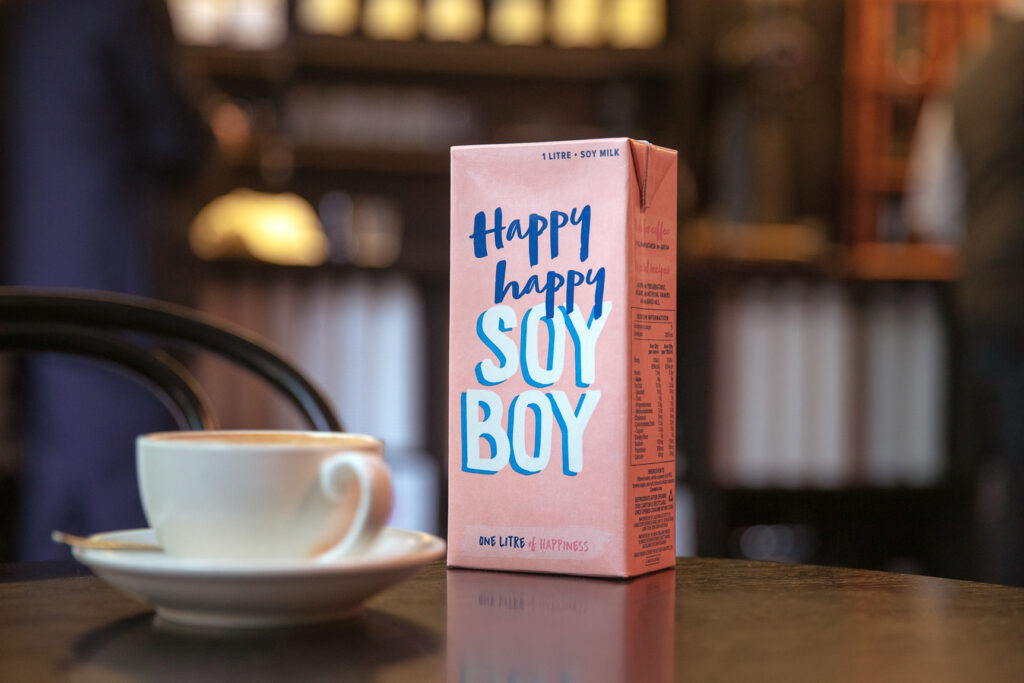
Beyond the transparency, Happy Happy Foods are ready to take action based on their climate footprint. With their climate footprints in one dashboard, they can make better decisions and statements true to their mission. Employing a strategy of “Measure-Reduce-Offset”, Lloyd and his team are prepared to get to work.
The biggest challenge is determining how we reduce from here. Now that we have a platform where we can see where all our emissions, we can see what changes we can take. For example, if we were to switch from A to B it might cost slightly more but it's so much less carbon intensive that the change is actually much more valuable from an environmental perspective, which is our priority
Industry change is underway
With so many valuable insights and meaningful initiatives, Happy Happy Foods is a plant-based player to keep an eye on. We asked Lloyd to address the food industry and his words echo the mindset of resilient success:
Facts are facts, you can't hide from the numbers. There are environmental claims being tossed left and right but the industry doesn’t explain what the reality beyond the narrative is – or often, they are not aware. Publish the numbers and be transparent because when a lot of people work to make it happen, change occurs.”
Data backs Lloyd’s statement once again. A survey of 900 cafes in Australia showed that a quarter of consumers choose plant-based alternatives in their coffee and emissions are cited as the main reason for the switch [1]. Based on the growth trajectory of 43% in 3 years, a market analyst adds that plant-based alternatives for dairy milk are set to capture half of the café drinks market in the next few years. What motivates this consumer trend stems from the same belief that spun the creation of Happy Happy Foods: Plant-based m*lks can work just as well with espresso as dairy and they are just as tasty– but more climate-smart.
So try a Happy happy latte and know that your choice is making a difference. The climate footprints confirm it!
Newsletter to-go?
Our special today is our Newsletter, including snackable tips, hearty climate knowledge, and digestible industry news delivered to your inbox
Related Posts
Nordic Seafarm: A jack of all trades ingredient, an ace in climate performance
What’s your first thought when you think of seaweed? And no, it can’t be maki rolls! Nordic Seafarm is here to make Nordic sugar kelp the top-of-mind ingredient. Multifaceted, bringing a wave of u
Planet A Foods sells 92% CO2e savings – and the food industry is buying
One could say that Planet A Food’s main product is CO2 savings. One could say that, if Planet A Food’s flagship product, Nocoa, wasn’t taking over the confectionery world. Planet A Food’s oat
Hey Oatly – Show us your climate strategy!
Oatly is a global inspiration regarding its climate strategy and communication. Since its initial boom, Oatly made noise challenging the entire food industry to show their numbers – and you may imag
Moma Foods Partners with CarbonCloud to Drive Sustainable Impact
We’re pleased to announce our partnership with UK-based Oat drink company MOMA Foods. This collaboration marks a significant step towards achieving MOMA’s mission of offering well-sourced,

